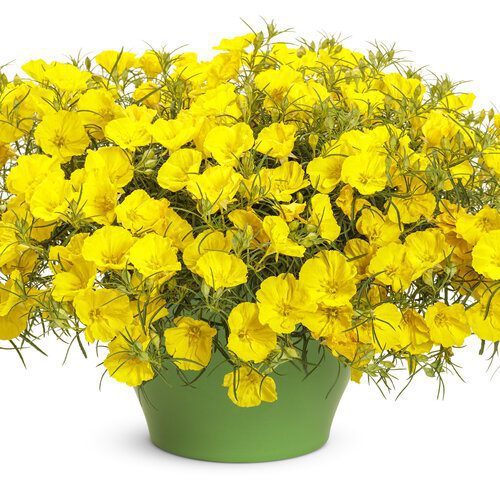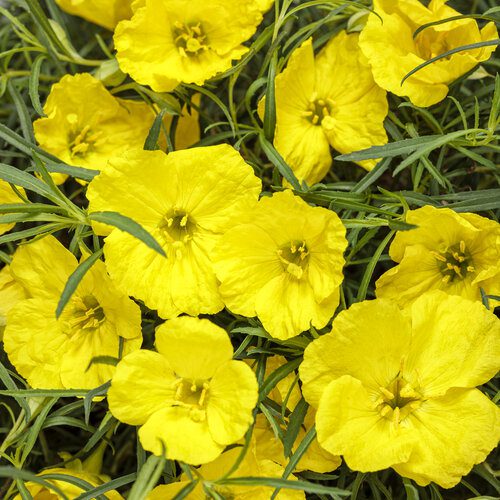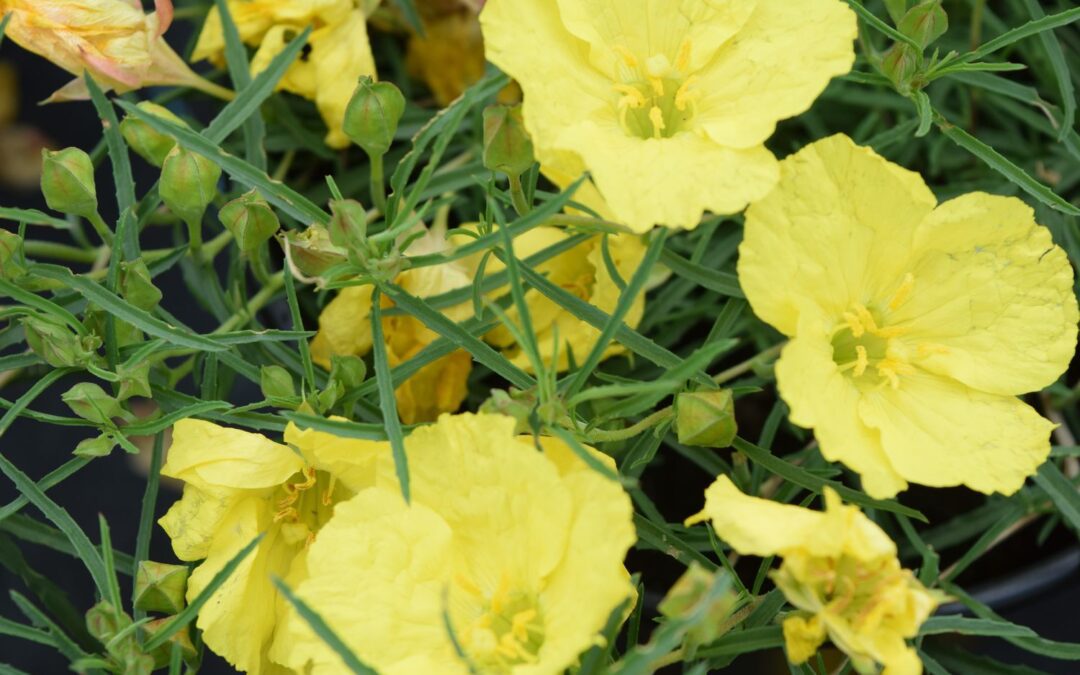Is sunshine yellow your color? If so, you might want to take a look at an under-utilized, low-growing perennial that also loves the sunshine and can take the heat of our San Antonio, Texas summers. I’m talking about Calylophus. Other names you may have heard Calylophus go by are: Sundrops, Texas Primrose, and Berlandier’s Sundrops.
If you’ve seen the native wildflower, Pink Evening Primrose that shows up in the median along the highways in early spring, you’ll get a good idea of what the native Calylophus flower looks like; although yellow in color instead of pink. Foliage is finer and more needle-like than that of Pink Evening Primrose. Like our native wildflowers, Calylophus can stand the heat, drought, and direct sun.
This plant looks great spilling over walls or edges of rock gardens, or anywhere you a bed of well-draining soil for drought tolerant and like-minded plants like lavender, verbena, or even agave. All of these plants can’t stand having “wet feet” from standing water in the soil, so amend and raise gardens up if needed to achieve good drainage.

Image courtesy Proven Winners.
How to Grow Calylophus in San Antonio, Texas.
- Soil Requirements: Calylophus thrives in well-draining soil, ideally sandy or loamy, ideally with a pH range of 6.0 to 7.0.
- Light Requirements: This plant prefers full sun, requiring at least six hours of direct sunlight daily for optimal growth, and the best show of blooms.
- Water and Fertilizer Requirements: Although you will need to make sure to water enough at planting to get Calylophus established, future watering should be moderate; allow the soil to dry out between waterings. Fertilization is minimal; a balanced, slow-release fertilizer in early spring will suffice.
- Heat and Drought Tolerance: Calylophus is highly tolerant of heat and drought, making it suitable for the warm climate of San Antonio.
- Cold Hardiness: This plant is cold-hardy down to about 20°F (-6°C), allowing it to endure the mild winters San Antonio generally has.
- Mature Growth: At maturity, Calylophus typically reaches a height of 12 to 18 inches and spreads about 24 to 30 inches wide.
- Additional Qualities: It is known for attracting pollinators and is resistant to deer. This plant is evergreen, giving your landscape interest with lush greenery year round. Additionally, it has few true pest or disease issues.
- Flower Description and Bloom Time: The plant produces bright yellow, open cup-like flowers that bloom profusely in spring through summer, and may bloom sporadically up to frost, creating a vibrant display in your garden.
- Best Planting Locations: Calylophus is versatile; it can thrive in garden beds or containers, making it a great choice for various landscape designs.

Image courtesy Proven Winners.
This adaptable and resilient plant makes a beautiful addition to any garden in San Antonio!
~The Happy Gardener, Lisa Mulroy

